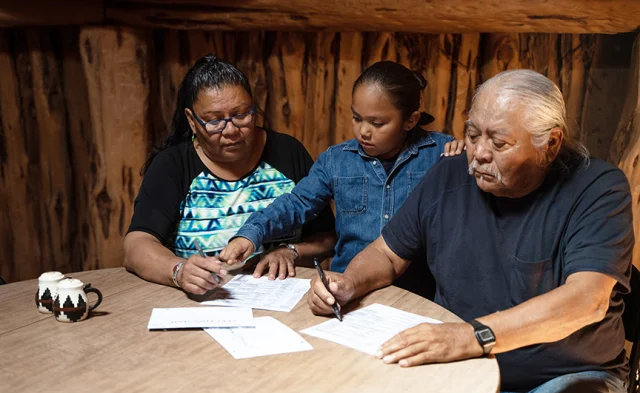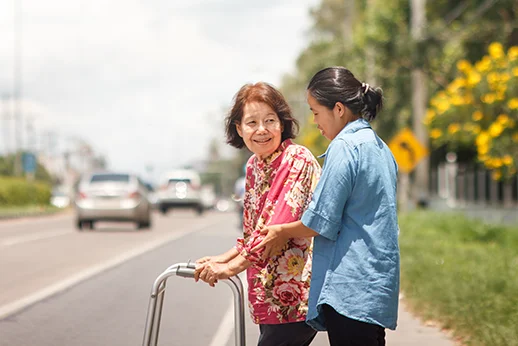Filter


Lack of Broadband Impedes Native American Access to Aid
During the pandemic, the U.S. Social Security Administration leaned into providing more services and processing applications online. But that has furthered the agency’s disconnect with Native Americans living miles from its field offices in rural areas with poor internet access. That’s one conclusion from a new study of the agency’s effectiveness in reaching Native American and Alaskan Native populations. The study included some analysis of data on these communities but was based largely on interviews with tribal leaders, community members, advocates, and the government staff who assist people applying for Social Security and other government benefits. Although tribal communities have a higher poverty rate than non-Native populations, their members are somewhat less likely to be receiving Social Security’s various benefits,…
April 18, 2024
What’s Stopping People from Applying for Disability
When people aren’t getting a government benefit they’re eligible for, the program’s goal of improving equity is compromised. Social Security’s disability insurance is an example. Roughly half of the 20 million adults who have a disability that limits or completely prohibits them from working are receiving the benefit. Not all of them would meet the program’s criteria for eligibility. But research based on a survey of workers and interviews with people with disabilities reveals some of the reasons they decide to not even try to apply. An analysis of the survey data shows that the decision is, to a large extent, a matter of having certain advantages. The non-applicants were a fairly small group. But they were more educated and…
April 16, 2024
Part D Plans Ramp up Restrictions on Medications
The Inflation Reduction Act signed by President Biden in 2022 somewhat limits how much retirees will pay out of their own pockets for medications this year. Next year, the law imposes a hard cap of $2,000. But while retirees are getting a reprieve from Congress, insurance companies are pushing in the opposite direction. According to research appearing in Health Affairs, insurers are tightening retirees’ access to some medications and increasing the number that are excluded from Part D and Medicare Advantage plan coverage altogether. Ultimately, this might either cost retirees more or, in the most extreme cases, prevent them from taking some necessary medications if they can’t afford to pay the cost themselves. The $2,000 annual cap on out-of-pocket drug…
April 11, 2024
Drop in Credit Score is Fallout from Older Partner’s Death
The negative financial consequences for individuals over age 50 who lose a partner are dramatic. A new study by Ohio State researchers found that the surviving partners see their credit scores drop by 10 points – a decline that persists for up to two years following the partner’s death. Further confirmation of the financial fallout is the rise in delinquencies on debt payments. If the late payments involve credit cards, which retirees frequently roll over to the next month, they can expose the fragility of the survivor’s finances. Anytime a spouse or partner dies, the survivor’s finances destabilize. The Social Security income coming into married households declines if the number of checks is reduced from two to one. Other researc…
April 9, 2024
National Retirement Plan Would Lift Low-income Saving
Virtually all high-income workers in this country are saving in some type of employer retirement plan. But only a minority in the lowest-income group are. A new study tackles this serious shortfall for disadvantaged workers in service, retail and other low-paying jobs. The crux of the problem, the researchers find, is that they lack easy access to a retirement savings plan at their jobs. This analysis, by establishing a direct connection between access to an employer-based plan and the act of saving, goes on to show that national legislation would greatly boost the financial security of low- and also middle-income workers by providing a retirement plan when, as is often the case, their employers do not. Automatically enrolling them would…
April 4, 2024
Delay Social Security? Not Everyone Can Do it
Financial advisers often encourage older workers to delay signing up for their Social Security as long as possible to maximize their monthly income. But several of our blog’s readers point out, rightly, that this isn’t always possible for people in physically taxing jobs. Blue-collar workers are in a real Catch-22, caught between the unforgiving financial demands of retiring and a body that can’t take any more work. “They were just worn out by 62, and continuing to work in their occupations would be exceedingly taxing and dangerous due to declining abilities,” he said. “Work like that can take years off a life.” But for another reader, financial security – his wife’s – was the primary consideration in deciding when to…
April 2, 2024
Rising Stocks, House Prices Boost US Retirement Outlook
While COVID was raging, the jump in house prices and a rising stock market were dramatically improving U.S. workers’ retirement finances. But the news is not quite as good as it appears, because the increase in house prices in 2020 through 2022, which continues today, was the largest single reason for the improvement. Yes, Americans are wealthier on paper, thanks to a combination of old mortgages with low interest rates and increasing house prices fueled by strong housing demand during COVID in suburban and rural markets. Among the narrower group of people who own their homes, the share of households at risk dropped sharply, from 34 percent to 24 percent. But it is also fairly unusual for retirees to capitaliz…
March 28, 2024
Bureaucracy, Paperwork Block Access to Government Aid
Seven million low-income Americans who would qualify for SNAP food stamps are not receiving them. And millions have fallen out of their state’s Medicaid coverage or Children’s Health Insurance Program since the federal guarantee of coverage during COVID expired last year. The bureaucratic hurdles, multiple-page applications, and layers of federal and state requirements cause many eligible people to give up on applying or, if they apply, to be rejected by government safety net programs for incomplete or improper applications. “It can feel like a full-time job getting on those programs and actually staying on them,” Pamela Herd, co-author of “Administrative Burden: Policy by Other Means,” said in this NewsHour video. Morgan Wingate, a single mother of three, said she could really us…
March 26, 2024
Nursing Homes Forced to Hire More Costly Outside Staff
COVID has wreaked havoc on the nursing home industry’s staffing. Prior to COVID, only one in five nursing homes had to hire some of their workers from outside agencies to fill in as caregivers for their patients. Today, nearly half are using agency staff, who are providing more and more hours of the direct care that these high-need patients require, according to research in the March issue of the journal Health Affairs. Hiring agency staff is more expensive than employing people in-house, and the growing use of them has created numerous problems for nursing homes and potentially their patients, who lose out when their caregivers are temporary workers unfamiliar with their needs. Staff shortages had already been an issue but…
March 21, 2024
In COVID Year 2, Older Workers Faced Tough Choices
The first year of the pandemic, a period of great uncertainty, was even more fraught for older workers, who were at higher risk of serious illness or death if they contracted the virus. The second year brought more uncertainty. Older Americans were embracing the new vaccine as variants of the virus continued to evolve. Unemployment, after spiking at nearly 15 percent the previous year, was coming back down. In September, the generous cash assistance approved in Congress that had kept many Americans afloat expired. Despite the job market recovery in Year 2 of COVID – April 2021 through March 2022 – new research finds that fewer older people were employed because many of them had decided to stop working or…


















